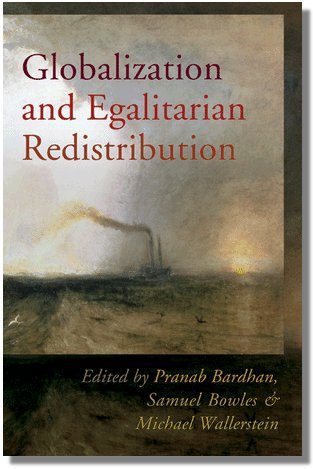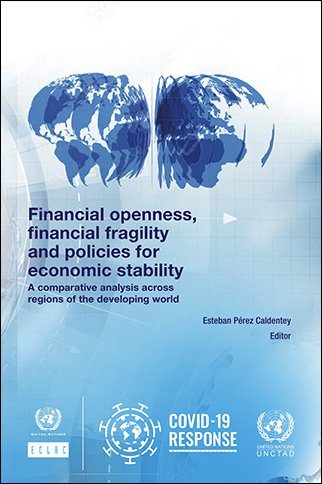Publisher: Third World Network Year: 2023 No. of pages: 42 Download now About the Book…
Globalization and Egalitarian Redistribution Edited by Pranab Bardhan, Samuel Bowles and Michael Wallerstein (Review by Praveen Jha)

Publisher: Oxford University Press
ISBN: -13: 978-0691125190
Review by Praveen Jha
As the title suggests, the book under review here explores the relationship between globalization and redistribution, a theme that has been amongst the major bones of contention in debates on globalization. The more enthusiastic advocates of globalization view global economic integration as a welcome high tide that will lift all the boats and bring significant economic gains to everyone across the globe; on the other hand, the critics argue that large sections of the global population have been harmed a great deal, economically and otherwise, and inequalities have been exacerbated as a consequence of ongoing globalization.
Ofcourse, the relationship between globalization and egalitarian distribution has several aspects e.g. equity or otherwise between nations which may show a different trajectory compared to distributional outcomes within nations across, for instance, deciles of population, which in turn may be different from distributional trends across social and economic categories etc. Furthermore, both for conceptual as well as operational reasons, which particular variable (for instance, assets, income or consumption) ought to be given priority remains a controversial subject. Yet other tricky considerations involve separating and measuring the impact of ‘globalization’ per se as distinct from other significant economic and socio-political factors. There is, as one may expect, a growing literature on these and related issues and it may be fair to say that there are few simple and unequivocal answers to most of the much-debated questions. Nonetheless, it may not be off the mark to suggest that most commonly used indicator of equality (i.e. income equality) has worsened during the current phase of globalization, and the gap between the two ends of the pole has tended to increase significantly. For instance, as per a well-known study by Milanovic (2007) the ratio of GDP per capita between the twenty richest and the twenty poorest countries rose from 54:1 during 1960-62 to 121:1 during 2000-2002. Sure enough, there are a handful of developing countries which have reduced the gap vis-à-vis the developed countries, the trend for most developing countries has been in the opposite direction.
As regards trends in income inequalities within countries, it may be difficult to find exceptions to the rule of growing inequalities almost everywhere. Deregulation premised on the magic of the market, lower taxes on high incomes, increasing integration of product markets as well as capital/finance markets across the globe and a host of other reasons organically connected with the economics of globalization have resulted in rapidly widening gap between the income of the profit earners/rentiers/managers of capital/other components of the elite and that of wage earners. The available evidence generally indicate that there has been a decline in the share of wages in Gross Domestic Product in almost every country across the globe (for a detailed discussion on this issue, see ILO’s Wage Report, 2009). To get a feel of the magnitude of such trends one may recall a couple of numbers. In the developed world, one of the fastest growing and the wealthiest country, namely the USA, according to a recent estimate by Paul Krugman, between 1980 and 2007 the real incomes of the top .01 of Americans rose sevenfold whereas the real income of the median family rose only 22 per cent, which was less than a third of its growth over the preceding period of 27 years. To cite another illustrative number from the US economy, at the beginning of the 1970s, in General Motors, a company that was a national icon then, the Director’s salary was 88 times more than the average salary of its employees; as of 2007, in the famous retail sector giant Wal-Mart, which probably enjoys a similar cult status at the current juncture in the collective imagination of the US economy, the Director earned 1,300 times more than the average salary of its employees. To take another example, the Chief Executive Officers (CEOs) in the 15 largest companies in the United States were earning 360 times more than the average worker in 2003, and by 2007, this differential had increased to 520 times. Likewise, if one looks at the relevant trends in even a handful of countries often cited as globalization winners (e.g. China, India, Brazil, Russia, Mexico, Malaysia etc.), the story is similar. For instance as per the official estimates of the Chinese govt. the Gini Coefficient for China increased from 0.224 in 1985 to 0.449 in 2003. In one the most comprehensive studies of global income inequalities by the ILO, which examined the relevant trends in 70 developed and developing countries, it comes out conclusively that the gap between the richer and poorer households had widened considerably between 1990 and 2005 (World of Work Report 2008, ILO). In sum, whatever may be the difficulties in mapping with acceptable exactitude, different dimensions of inequality in the era of globalization, the available evidence indicate a worsening in this regard.
As it happens, the volume under review is not concerned with, as the editors put it, ‘the much debated question: Does globalization increase economic inequality?’ Although the editorial introduction touches this question very briefly, almost in passing, but there is no attempt to engage with it in any serious manner. The editors suggest that the aim of the volume is ‘to know, instead, how globalization affects policies designed to address inequality, whatever its source’. However, I believe that the stated aim of the volume would have been served better with a critical degree of engagement with the above noted much debated question, as it could have provided a concrete grounding of the relevant issues and arguments raised by different authors.
Nonetheless, through the 13 essays included in the volume (including substantive introductory and concluding chapters by the editors), a number of propositions – from simple to quite complex and subtle – are advanced, examined and analysed by various contributors. In the words of the editors, the contributions address the following questions: ‘ Does globalization raise the costs and compromise the political viability of national policies designed to redistribute income to the less well off and to insure people against economic risks? If so, are there alterations in the canonical social democratic, corporalist, or liberal welfare state policy packages that can address the challenges posed by globalization, effectively assisting the poor and the unlucky while securing durable electoral support?’ (p2). Propositions explored in the volume revolve around these key questions and, as one would expect, no simple answers are provided; furthermore, while shedding some light on the answers to the said critical questions, the contributors to the volume, through sophisticated analysis provide a very useful service in helping the readers in engaging with theoretical and conceptual nitty-gritty of policy options relevant to the focal concerns of the volume. In the process, a number of subsidiary questions are thrown up, which require further attention.
The editors of the volume suggest that even though the key questions addressed by the volume are complex and elude simple answers, the collective wisdom of the contributors is that there is no pressing reason to believe that: ‘the task of reconciling global integration with economic security and distributive justice is insurmountable. Indeed, we suspect that adverse effects of globalization on the political viability of national-level redistributive institutions have been considerably exaggerated among policy makers and the public’ (p. 2). Further, it is claimed by them that: ‘Globalization does make some experimentation more costly, namely those that would lower the after-tax rate of return to capital. But dismantling the barriers to economic opportunity faced by the poor in credit markets, schooling, and access to health care, and making public bodies more responsive to the voices of the poor can enhance productivity. Where this is the case, global competition can favour egalitarian solutions’ (p 11).
In my judgment, it is not the anxiety of the critics of globalization that is exaggerated but the optimism of the editors of this volume, once we move beyond the rarefied world of theory. Infact the difficulties towards any move to egalitarianism is so pervasive and widespread across the world in the current era of globalization, that one is left wondering about the ‘win-win’ prospects claimed by the editors. Infact, it is interesting to note that some of the contributions in the volume itself have dwelt on the serious difficulties in moving towards egalitarianism precisely because of globalization (e.g. contributions by Bowles and Pagano, Offe, among a couple of others). May be, part of the explanation for the above-noted optimism lies in the fact that almost all the contributors (with a couple of exceptions) have focused on the advanced countries where the deleterious impacts of globalization have not been as devastating as in the relatively poorer countries.
In fact several public policy options which the editors suggest are do-able in the era of globalization (e.g. health, education etc) to make economic development more equitable, are precisely the ones which have been major casualties in the era of globalization in most developing countries; for reasons of space, it is not possible to discuss the relevant evidence here and in any case these are well-known. Furthermore, I would suggest that such a denouement is organically connected with the underlying economic forces at work as regards the current model of globalization, which is why many of us prefer to call it neo-liberal globalization. In particular, the stranglehold of capital on policy making is such that the ‘theoretical’ possibilities of progressive and egalitarian measures have been pushed to the margins and most states have become a hostage (willingly or unwillingly) of capital. [sure there are some exceptions to the rule that need not hold us here]. To sustain the thought that such progressive policies are feasible may well be wishful thinking.
In a recent piece, (Hindu, August 25, 2009) Paul Krugman wonders, in the context of debates on health-care reforms in the US, why the palpable failure of certain discourses, (he is specifically referring to Reaganism and the economic ideology of ‘magic of the market place’ in general), does not kill such discourses; as he puts it: rather such doctrines turn out to be ‘zombie doctrines’: even though they should be dead, they keep on coming. He offers a somewhat simple minded, but bang on target, explanation for such doctrines that ‘there is lot of money behind it’. Paraphrasing Upton Sinclair, he says ‘it is difficult to get a man to understand something when his salary and campaign contributions depend upon his not understanding it’.
It is ironical that a ‘mainstream’ economist is able to connect more with the underlying political economy of contemporary globalization, in whatever limited manner, compared to the editors and contributors to the present volume, many of whom are supposed to have a reputation in the political economy circles! In other words the present volume, which in many ways is a stimulating one, has missed out almost entirely on the political economy of globalization in a substantive sense.
Praveen Jha is Professor of economics at the Centre for Economic Studies and Planning, School of Social Sciences, Jawaharlal Nehru University, New Delhi. He can be contacted at praveen@mail.jnu.ac.in, praveenjha@hotmail.com



